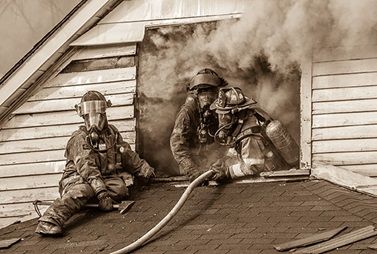In a joint effort to safeguard public health, the International Association of Fire Fighters has joined forces with Consumer Reports to deliver a petition with over 32,000 signatures to the National Highway Traffic Safety Administration (NHTSA) seeking revised fire safety standards in automobiles.
“It is important for the IAFF to support efforts to remove flame retardants from cars because the fire environment is broader than buildings and homes,” said Racquel Cesnalis, IAFF Deputy Director, Occupational Health and Medicine. “Flame retardants do not perform as they were designed; they do not prevent fires and they are making the fire environment more toxic and increasing disease in fire fighters.”
The IAFF is one of 70 organisations that sent a letter to NHTSA asking the department to update its 1971 flammability standard for vehicle interiors, FMVSS No. 302., and consider replacing the current flammability testing with a different type of test that does not lead to the use of harmful chemicals in vehicles.
“We’re here with an important message today. We need to get cancer-causing chemicals out of cars,” said Will Wallace, Associate Director, Safety Policy for Consumer Reports. “This is an incredible partnership we have between consumers, scientists, and fire fighters. We’re all standing here to say we need to change the safety standard that exists with fire safety in our cars.” This initiative aims to eliminate toxic flame-retardant chemicals from car interiors, which are linked to severe health risks, including cancer.
“Everyone who rides in a car is needlessly exposed to cancer-causing, neurotoxic flame-retardant chemicals because of an outdated flammability standard,” said Arlene Blum, executive director of the Green Science Policy Institute. “It is time for the National Highway Traffic Safety Administration to modernise their 1971 standard so we can have cars that are both fire-safe and healthy.” Fire fighters also face increased occupational exposure to PFAS through firefighting, training, and daily interactions with firefighting foams and turnout gear.
“Fire fighters are concerned that flame retardants contribute to their very high cancer rates,” said Patrick Morrison, the IAFF’s Chief of Field Services. “Filling products with these harmful chemicals does little to prevent fires for most uses and instead makes the blazes smokier and more toxic for victims, and especially for first responders. I urge NHTSA to update their flammability standard to be met without flame retardant chemicals inside vehicles.”








